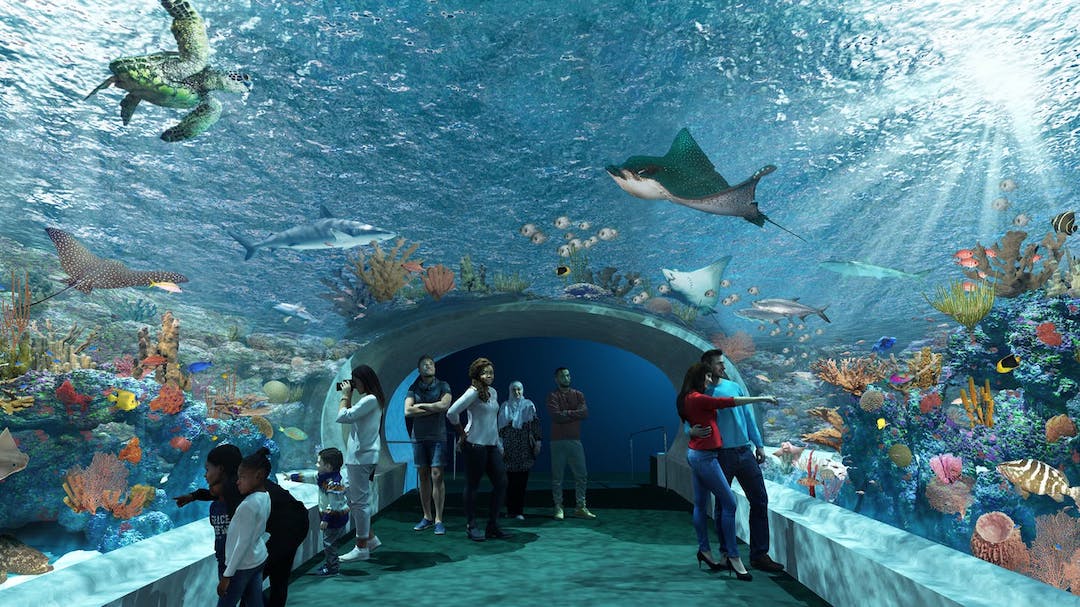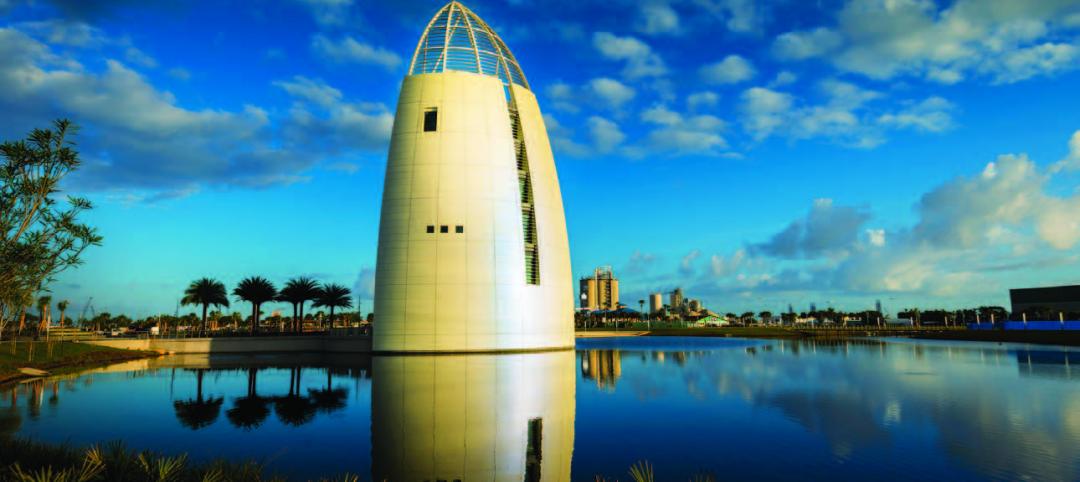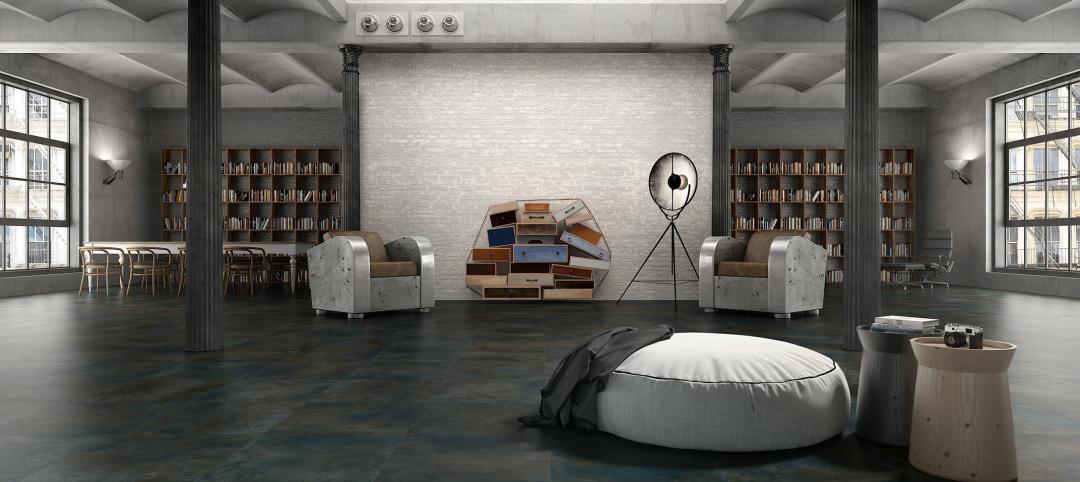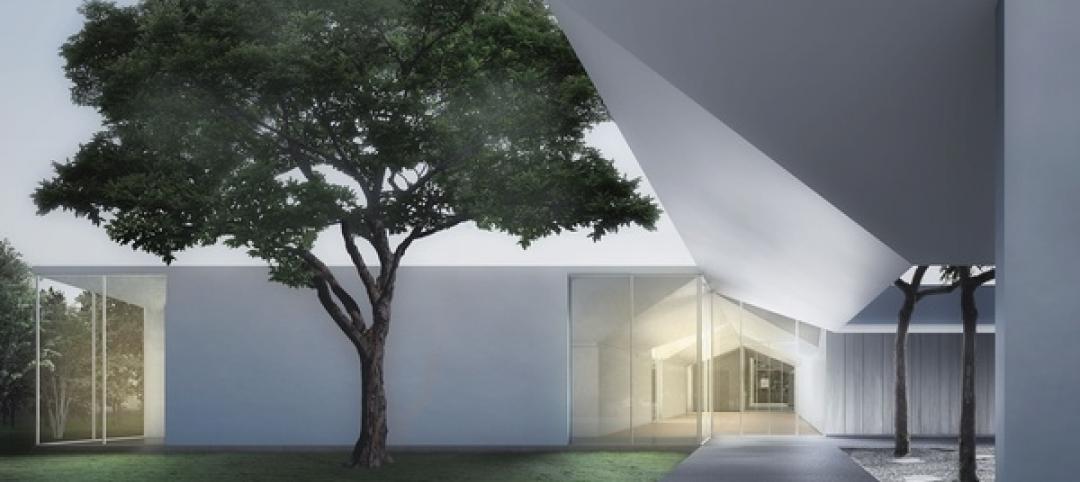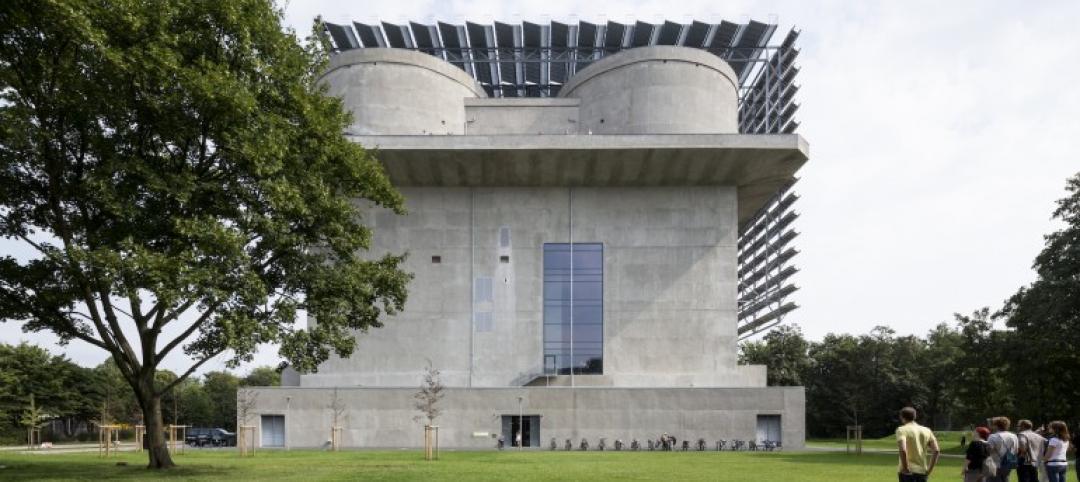The Shedd Aquarium has unveiled its strategic vision for the next 100 years. The vision, dubbed the Centennial Commitment due to the organization’s 100th anniversary in 2030, is aimed at ensuring a more equitable, sustainable, and thriving future for people and aquatic life.
The Centennial Commitment centers around three primary pillars - For People, For Communities, and For Aquatic Life. These pillars include:
- Deeper community investments and partnerships
- A modernized aquarium experience through the transformation and restoration of the historic galleries and dynamic new exhibits that provide greater and more accessible entry points
- New educational and experiential programs
- Digital engagements that bring animals and conservation action programs from the aquarium into more hands and homes
- Advancements in animal care and welfare
- Accelerated aquatic research and science
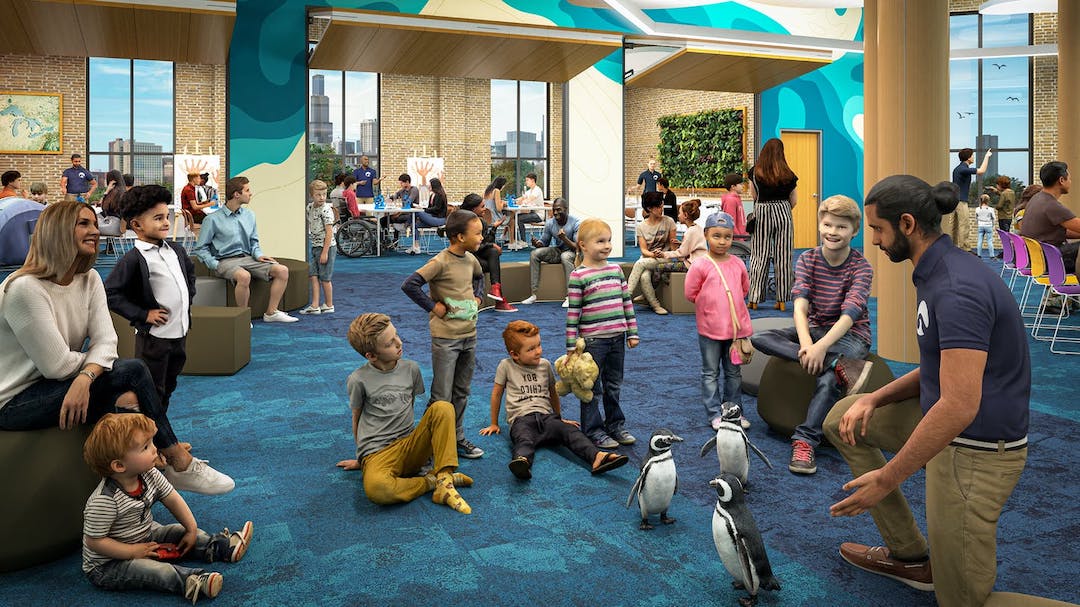
Half of the $500 million budget will power the programs and partnerships needed to achieve the Centennial Commitment’s aspirations while the other half will focus on the needed physical improvements to the historic Beaux-Arts-style building that will modernize the aquarium galleries and experience, enable greater accessibility, enhance animal habitats, and restore architectural features such as the opening of original windows that provide views of the Chicago skyline and Lake Michigan and unobstructed public access to the building’s original exterior promenade and garden spaces.
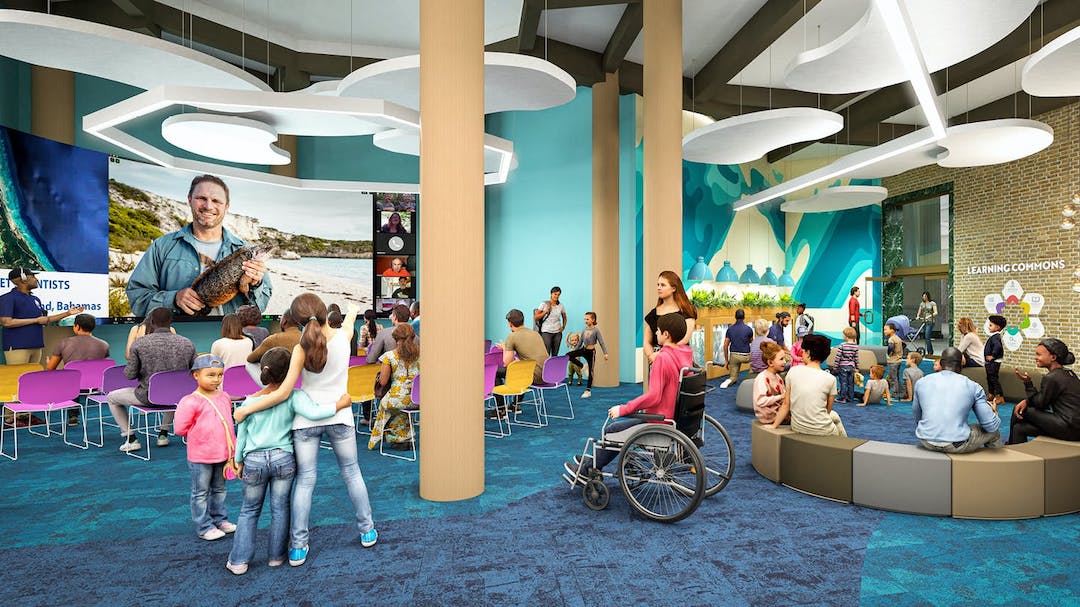
The multi-year, four phase construction project will begin in late 2022. Project highlights include:
- A modernized experience that will feature more accessible, interactive, highly immersive, and science-rich galleries
- A new learning commons located at the historic core of the aquarium on the main level that will serve as a launchpad and increase the amount of existing classroom space
- A centralized science hub that will merge five existing scientific laboratories into one central hub spanning microbial ecology, conservation science, water quality and chemistry, genome studies, and pathology
- New circulation pathways that will significantly reduce the number of transitions between areas of the aquarium, allowing guests to have multiple options regarding where they can start their journey and making navigation easier.
- Four acres of activated outdoor green space around the building that will increase natural connections to nature and bolster resilience on the lakefront while also adding experiential blue and environmental improvements.
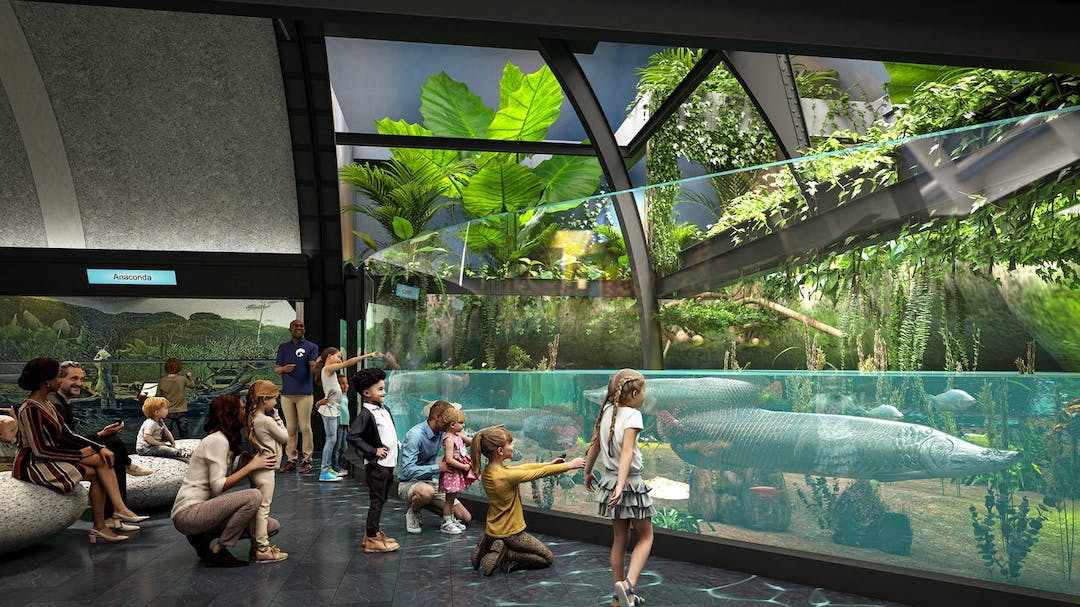
The modernization of the historic galleries will serve as the largest capital project for the organization in recent history, preceded by the expansion of the Abbott Oceanarium in 1991 (and its reimagination in 2008), Amazon Rising exhibit in 2001, and Wild Reef exhibit in 2003.
The build team will include Pepper/BMI Construction (general contractor partners), Valerio Dewalt Train (architect), Thinc Design (exhibit design partner), JLL (project manager), Institute for Human Centered Design (accessibility partner), and Trinal (equity and inclusion partner).
Construction is slated to conclude in 2026 with new galleries, programs, and experiences opening each year on a rolling basis.
Related Stories
Sponsored | | Mar 21, 2014
Kameleon Color paint creates color-changing, iridescent exterior for Exploration Tower at Port Canaveral
Linetec finishes Firestone’s UNA-CLAD panels, achieving a one-of-a-kind, dynamic appearance with the first use of Valspar’s new Kameleon Color
| Mar 20, 2014
Common EIFS failures, and how to prevent them
Poor workmanship, impact damage, building movement, and incompatible or unsound substrate are among the major culprits of EIFS problems.
| Mar 13, 2014
Do you really 'always turn right'?
The first visitor center we designed was the Ernest F. Coe Visitor Center for the Everglades National Park in 1993. I remember it well for a variety of reasons, not the least of which was the ongoing dialogue we had with our retail consultant. He insisted that the gift shop be located on the right as one exited the visitor center because people “always turn right.”
| Mar 12, 2014
14 new ideas for doors and door hardware
From a high-tech classroom lockdown system to an impact-resistant wide-stile door line, BD+C editors present a collection of door and door hardware innovations.
| Mar 5, 2014
5 tile design trends for 2014
Beveled, geometric, and high-tech patterns are among the hot ceramic tile trends, say tile design experts.
| Feb 24, 2014
New Menil Drawing Institute will fit in with leafy surroundings
In Houston, plans are being finalized for the first freestanding American building built to house and conserve modern and contemporary drawings.
| Feb 18, 2014
Robert A.M. Stern sent back to drawing board for Revolutionary War museum in Philadelphia
The Philadelphia Art Commission has suggested some significant changes to the design by Robert A.M. Stern Architects, namely the elimination of a cupola and the addition of eye-level windows on the ground floor.
| Feb 14, 2014
Giant interactive pinwheel adds fun to museum exterior
The proposed design for the Santa Cruz Museum of Art and History features a 10-foot pinwheel that can be activated by passersby.
| Feb 14, 2014
Crowdsourced Placemaking: How people will help shape architecture
The rise of mobile devices and social media, coupled with the use of advanced survey tools and interactive mapping apps, has created a powerful conduit through which Building Teams can capture real-time data on the public. For the first time, the masses can have a real say in how the built environment around them is formed—that is, if Building Teams are willing to listen.
| Feb 13, 2014
Extreme Conversion: Nazi bunker transformed into green power plant, war memorial
The bunker, which sat empty for over 60 years after WWII, now uses sustainable technology and will provide power to about 4,000 homes.


